 |
||
| uvm a - z | directory | search |
 |
DEPARTMENTS LINKS
|
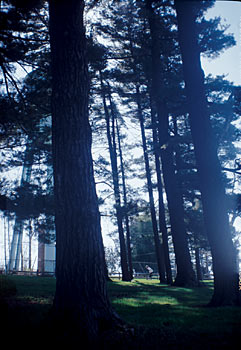
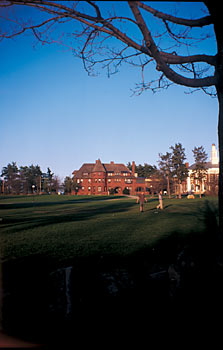
Redstone
UVM's
backyard
by
Thomas Weaver
photographs by Sally McCay
Before
there was a Redstone Campus, there was a Buell estate — home to some
of the most impressive lumber-baron-built architecture from Burlington’s
19th century. While there’s a good deal more to Redstone circa 2003,
Andrew Addison Buell’s home, stable, and gardener’s cottage
still stand at the center of this part of campus, much of their original
splendor intact. University photographer Sally McCay, a collector of antique
cameras, appropriately packed a vintage 1924 Kodak Brownie to capture
the Buell buildings today.
The Buell estate’s architect, Herbert Burdett, had trained in Henry
Hobson Richardson’s Boston firm and clearly picked up a few lessons
from one of America’s great architects, designer of landmarks such
as Boston’s Trinity Church, Chicago’s Marshall Fields store,
and UVM’s Billings Library. The Richardsonian Romanesque style is
hard to miss —turrets, archways, and rough exterior stone combining
for a grand statement.
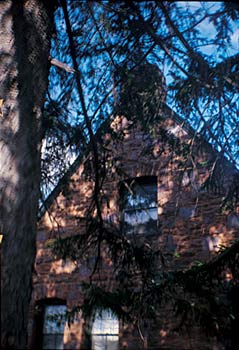
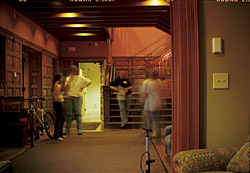
Burdett didn’t have to look far for the right building materials. Redstone (Monkton Dolomite to you geologists) was both dramatic and abundant. Willard’s Quarry off Shelburne Road, now a UVM natural area, was the source for Redstone Hall’s exterior. But once the same stone was discovered on the property, the rock for the carriage house/stable, now Robinson Hall, was quarried directly from the estate. Take a walk around the campus today, and you’ll still find plenty of redstone cropping up through the grass.
The University of Vermont came into the picture in 1921. Post-World War I enrollment increases, particularly the growing influx of female students, drove demand for more space. When the 66-acre Buell estate went on the market (a steal at $47,000), need met opportunity. The family home and the stable were soon converted into women’s dormitories. (We’ll leave it to those more qualified to analyze why the women students had the longest walk to classes. But alumni from the 1950s may recall that on winter days when the mercury dropped below zero, the dress code was kindly loosened to allow women to wear slacks.)
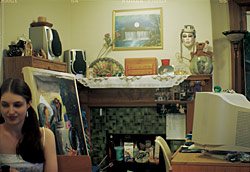
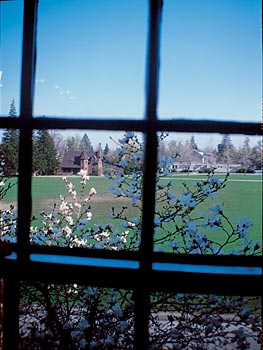
Robinson Hall has made the most dramatic transitions through the years;
going from housing horses to housing students requires a few changes,
one would assume. In 1982, Robinson received another retrofit when it
became office space for Residential Life and University Dining staff.
To generations of students, the quaint gardener’s cottage (Redstone
Lodge) would be remembered as the home of Philosophy Professor George
Dykhuizen. A succession of faculty and staff have continued to live there
on a rental basis. Mysterious and brooding on the outside, the west end
draped in boughs from a towering spruce stand, the cottage is snug and
surprisingly bright on the inside.
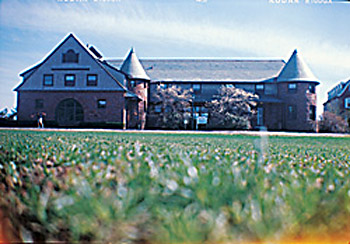
Redstone
Hall, the centerpiece, underwent an extensive renovation last summer;
new light fixtures and interior paint are true to the era the building
was built. Ornately carved woodwork and tile fireplaces have weathered
the years well, and peacefully co-exist with the occasional muddy mountain
bike in the foyer. Living in a mansion with lake views is one of the attractions
for student residents, the other is a special Residential Life program
that unites them in a shared commitment to a drug and alcohol-free lifestyle.
With 32 college students living there, it’s a bit more crowded than
in the Buell family’s day. Yet, among the enduring beauties of Redstone
Hall is the fact that after 114 years, it is still a house that people
proudly call home.
Our thanks to David Blow, former University of Vermont archivist, whose
Historic Guides to Burlington Neighborhoods informed much of this
article.
